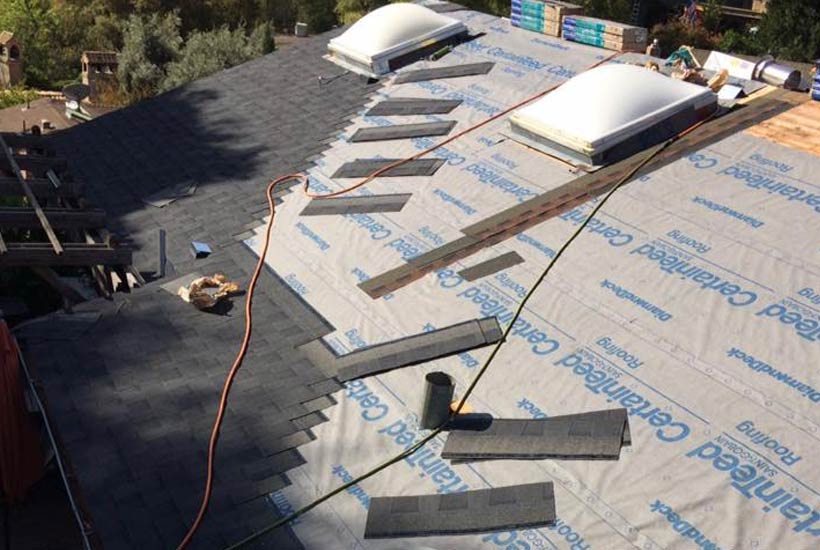There is more to the roof than just the shingles. Beneath them are layers of material that roofers call underlayment. While the first underlayment, roofing felt, was once mean to just prevent the adhesive in the wooden decking at the base of the roof from interfering with the shingles, they can now accomplish much more.
Roof underlayments can add a lot of protective power to your roof, helping to prevent leaks and moisture issues. They also create a uniform surface for your shingles to sit on. This prevents “picture-framing,” or where you can see the texture of the wooden decking through the shingles. Your roofer’s choice of underlayment does matter, and roofing felt is often required by building codes, so you should learn the basics about this important layer of the roof.
Roofing Felt
The most basic option for roofing underlayment is roofing felt. This is a fabric-like material made of wood cellulose, fiberglass, or polyester. The fabric is soaked in asphalt so that it will be more durable and repel water. Roofing felt is measured in weight, or thickness of the material. The two basic weights are 15pounds and 30pounds per 100 square feet. Typically, a roofer will choose 15-pound felt on high pitched roofs and 30-pound felt for roofs with a lower slope.
Synthetic Underlayment
However, traditional roofing felt is not your only option. Roofing manufacturers now also produce synthetic roofing underlayment products that don’t have a fabric base. These materials offer several advantages. They are much more water-resistant. Typically, they have a non-slip surface to help roofers walk on them. With adhesive backing, like a thick sticker, they adhere to the roof without staples, which helps them provide better water protection.
Synthetic roofing underlayments are more expensive than roofing felt, but they do provide better protection and are often part of better overall roofing systems. It may be necessary to choose a synthetic underlayment in order to qualify for the best warranty protection from your shingle manufacturer.
Ice and Water Protector
These days, roofers need to put down a second layer of roofing underlayment called ice and water protector. This is another synthetic underlayment but developed specifically to protect roofs from ice damming and other water intrusion. This material does not “breathe” but resists any moisture transmission.
Unlike roofing felt, which is installed all across the roof, this underlayment is installed along the edges of roofs and at its most vulnerable spots. This includes the valleys around skylights, chimneys and dormers.
Ice and water protector is more common in cold-weather areas, but it has its uses in dry climates too. It provides excellent protection from water intrusion of any kind, making up for issues you may have with your shingles. It is also often required by building codes.
Which combination of underlayments is right for you? It depends on your specific roof and shingles. Your roofer can help you choose the best underlayment for your needs.

